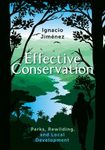About this book
As the world population grows, so does the demand for food, putting unprecedented pressure on agricultural lands. At the same time, climate change, soil degradation, and water scarcity mean that productivity of many of these lands is deteriorating. In many desert dryland regions, drinking wells are drying up and the land above them is sinking, soil salinity is increasing, and poor air quality is contributing to health problems in farm communities. "Rewilding" the least productive of these cultivated landscapes offers a sensible way to reverse the damage from intensive agriculture. These ecological restoration efforts can recover natural diversity while guaranteeing the long-term sustainability of the remaining farms and the communities they support.
This accessibly written, groundbreaking contributed volume is the first to examine in detail what it would take to retire eligible farmland and restore functioning natural ecosystems. Rewilding Agricultural Landscapes uses the southern Central Valley of California, which is one of the most productive and important agricultural regions in the world, as a case study for returning a balance to agricultural lands and natural ecosystems. This project – one of the largest rewilding studies of its kind in dryland ecosystems – has shown that rewilding can slow desertification and provide ecosystem services, such as recharged aquifers, cleaner air, and stabilized soils, to nearby farms and communities. Chapters examine what scientists have learned about the natural history of this dryland area, how retired farmland can be successfully restored to its natural wild state, and the socioeconomic and political benefits of doing so. The book concludes with a vision of a region restored to ecological balance and equipped for inevitable climate change, allowing nature and people to prosper. The editors position the book as a case study with a programmatic approach and straightforward lessons that can be applied in similar regions around the world.
The lessons in Rewilding Agricultural Landscapes will be useful to conservation leaders, policymakers, groundwater agencies, and water mangers looking for inspiration and practical advice solving the complicated issues of agricultural sustainability and water management.
Contents
Acknowledgments
Chapter 1. Opportunity Knocks: Water Scarcity and the Potential for Rewilding Agricultural Landscapes in Desert and Dryland Ecosystems Globally \ T. Rodd Kelsey, H. Scott Butterfield, and Abigail K. Hart
PART I. Lessons Learned from the San Joaquin Valley
Chapter 2. Painting the Scene: Natural Plant Communities as Palettes for Restoration on Retired Farmlands \ Jennifer Buck-Diaz, Ryan E. O’Dell, Mitchell Coleman, and Christopher J. Lortie
Chapter 3. Lessons Learned from Over Twenty Years of Habitat Restoration on Retired Farmlands in the San Joaquin Valley \ Ellen A. Cypher, Lawrence R. Saslaw, Kenneth D. Lair, and Stephen Laymon
Chapter 4. Animals: The Final Puzzle Piece in a Functioning Natural Community \ William Tim Bean, Erin N. Tennant, Brian L. Cypher, Lawrence R. Saslaw, and Laura Prugh
Chapter 5. Using Synthesis to Reveal Restoration Lessons Relevant to Rewilding the San Joaquin Desert \ Christopher J. Lortie, Alessandro Filazzola, Maria Florencia Miguel
PART II. Principles of Farmland Rewilding from the San Joaquin Valley
Chapter 6. Assessing Species’ Responses to Climate Change to Guide When, Where, and How to Rewild Retired Farmland \ William Tim Bean, Joseph A. Stewart, Ryan E. O’Dell, and Scott Phillips
Chapter 7. Rewilding through Reintroduction \ Brian L. Cypher, Ellen A. Cypher, David J. Germano, Erin N. Tennant, and Lawrence R. Saslaw
Chapter 8. Genetic Considerations for Rewilding the San Joaquin Desert \ Jonathan Q. Richmond, Dustin A. Wood, and Marjorie D. Matocq
Chapter 9. Strategic Selection of Lands for Rewilding to Optimize Outcomes and Minimize Costs \ T. Rodd Kelsey, Benjamin P. Bryant, Adrian L. Vogl, Abigail K. Hart, and H. Scott Butterfield
Chapter 10. The Role of Diversifying Farmland Management in Rewilding the San Joaquin Valley \ Claire Kremen, T. Rodd Kelsey, and Sasha Gennet
PART III. Socioeconomic and Political Dimensions of Rewilding the San Joaquin Valley
Chapter 11. Managing Changes in Water and Land Use to Benefit People and Nature \ Ellen Hanak, Brian Gray, Jelena Jezdimirovic, and Peter Moyle
Chapter 12. Learning from Case Studies to Encourage Landowner Participation in Rewilding the San Joaquin Valley \ Abigail K. Hart
Chapter 13. Economics of Rewilding the San Joaquin Valley: Benefits, Costs, and Early Adoption \ Andrew B. Ayres
Chapter 14. Using Environmental Education and Community-Based Programs to Rewild Habitat \ Landon Peppel, Brooke Wainwright, Melissa Dabulamanzi, and Daisy Carrillo
PART IV. A Rewilding Vision
Chapter 15. A Vision for Rewilding the San Joaquin Valley \ H. Scott Butterfield, T. Rodd Kelsey, and Abigail K. Hart
Contributors
Index
Customer Reviews
Biography
Scott Butterfield is a Senior Scientist for The Nature Conservancy, where he is the Lead Scientist for the Strategic Restoration Strategy and Program Lead for the Managing Partnership at the Carrizo Plain National Monument. Butterfield holds a Ph.D. from Michigan State University.
Rodd Kelsey is Associate Director of the Water Program at The Nature Conservancy California. He helps lead the Conservancy's strategy focused on developing and expanding water management solutions to meet nature's and people's needs.
Abigail Hart is a project director in The Nature Conservancy's California Water Program. Her work and research focus on stakeholder engagement and collaborative management of working landscapes.


































